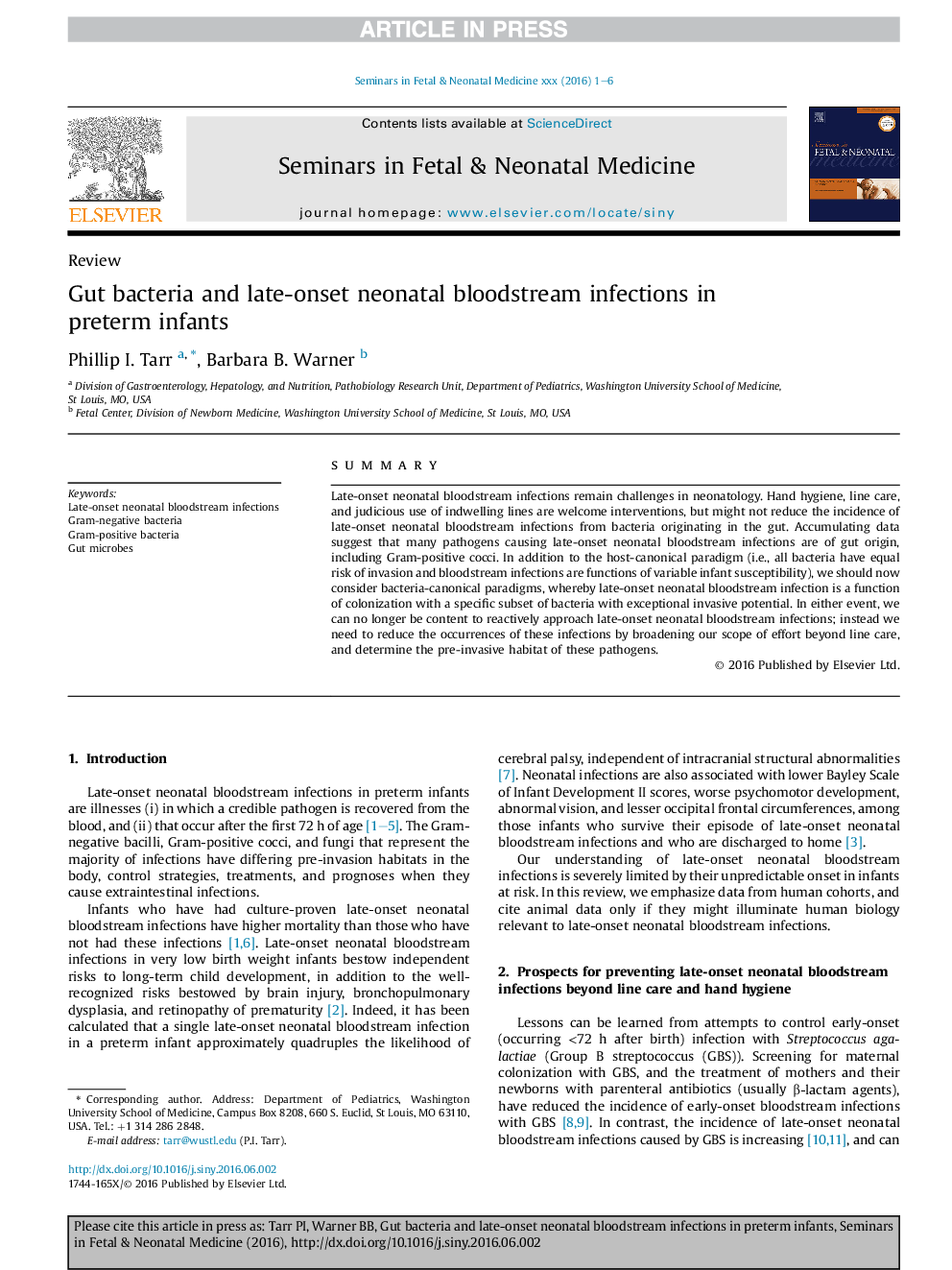| Article ID | Journal | Published Year | Pages | File Type |
|---|---|---|---|---|
| 5696915 | Seminars in Fetal and Neonatal Medicine | 2016 | 6 Pages |
Abstract
Late-onset neonatal bloodstream infections remain challenges in neonatology. Hand hygiene, line care, and judicious use of indwelling lines are welcome interventions, but might not reduce the incidence of late-onset neonatal bloodstream infections from bacteria originating in the gut. Accumulating data suggest that many pathogens causing late-onset neonatal bloodstream infections are of gut origin, including Gram-positive cocci. In addition to the host-canonical paradigm (i.e., all bacteria have equal risk of invasion and bloodstream infections are functions of variable infant susceptibility), we should now consider bacteria-canonical paradigms, whereby late-onset neonatal bloodstream infection is a function of colonization with a specific subset of bacteria with exceptional invasive potential. In either event, we can no longer be content to reactively approach late-onset neonatal bloodstream infections; instead we need to reduce the occurrences of these infections by broadening our scope of effort beyond line care, and determine the pre-invasive habitat of these pathogens.
Related Topics
Health Sciences
Medicine and Dentistry
Obstetrics, Gynecology and Women's Health
Authors
Phillip I. Tarr, Barbara B. Warner,
